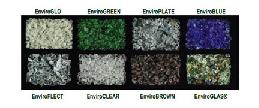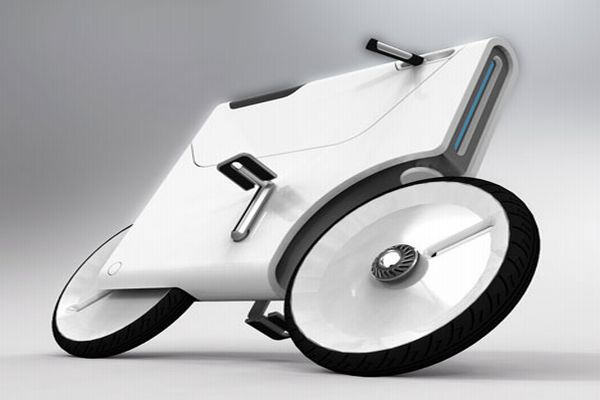
As we know it
The electric bicycle or e-bike, as the name suggests, is a bicycle fitted with an electric motor. What differentiates it from a motorcycle is that it has a a dual drive mode, you can pedal it like a conventional ( non-electric bike) or use the electric motor. The usual method of use is for the rider to pedal and use the motor to help when the pedal effort becomes high, for example uphill. The usage of e-bikes around the world have shown rapid increase since 1998. In China where bicycles have always been popular, there are estimates of 120 million e-bikes as of early 2010. The Electric Bikes Worldwide Reports – 2010 Update forecasts a market of one million e-bikes in Europe and 300,000 in USA.
Need for change
Most early electric bicycles were made up of electric motors retro-fitted to the conventional pedal operated bike. They retained the chain and sprocket drive for the pedal. When the motor was started, the pedal tended to be locked or free moving, thus completely eliminating pedal effort. The batteries used were lead-acid and the recharging was by friction drive from the rear wheel. The recharging was not very effective and the batteries needed frequent replacement. With the uptick in e-bike usage, many new designs have been attempted, which are not retrofits but new, purpose-designed vehicles. These e-bikes are functional, aesthetic, and are likely to attract a larger customer segment.
Some of these exciting new e-bikes are reviewed below.
1.HMK 561 by designer Ralf Kittman
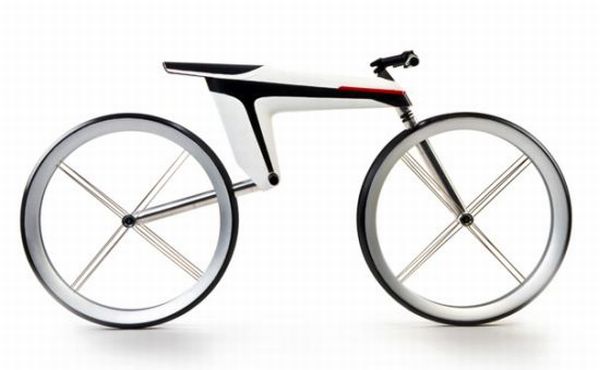
What’s new
The HMK 561 concept bike won the Industrial Design award iF in 2010 and is strictly not a bicycle but an ultralight motorbike. There are no pedals at all. Two electric motors located in the swing arms, drive the rims of the front and rear wheels. The frame is made of carbon fiber material that is an electric conductor. No wires are needed for the electric connections. The carbon fiber frame is said to act as a capacitor that stores the mechanical energy from the bike movement as electric charge to drive the motors.
What difference will it make
The bike is attractively designed and the use of carbon fiber for the frame will reduce weight. The use of dual rim drives will provide greater traction, whereas the elimination of the pedal and sprocket-chain mechanism sidelines many of the mechanical snags of conventional bicycles.
Problems
No battery appears to have been built into the bike and the source of motive power is not clear. While regenerating energy from mechanical movements and braking can help recharge batteries, it seems difficult to provide enough energy for the ride itself.
2. Grasshopper Bike concept
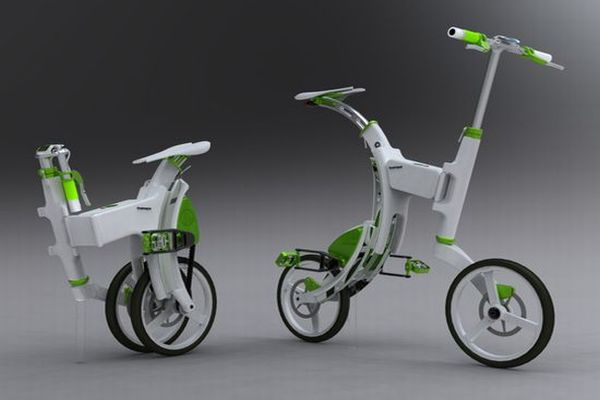
What’s new
The Grasshopper e-bike is foldable into a trolley which makes it very attractive for bikers. It is also convenient for people to take into their apartments after use for riding. The light weight frame is made of composite materials for rigidity and strength. The bike has electric motor in addition to pedals. The motor is powered by rechargeable batteries. The batteries recharge when the bike is pedaled and in braking or riding downhill. Interestingly, the bike can be parked on a stand to convert it into an exercise bike and the batteries can be charged during the exercise to serve as the power source for the commute.
What difference will it make
The foldable design will make this e-bike acceptable for people for mixed commuting needs. As the bike completely folds itself into a compacter identity, this concept will find acceptance even from older people or people with disability.
Problems
There seem to be no significant problems and the concept bike appears to have addressed many of the issues with e-bikes.
3. EBIQ Electric Bike concept
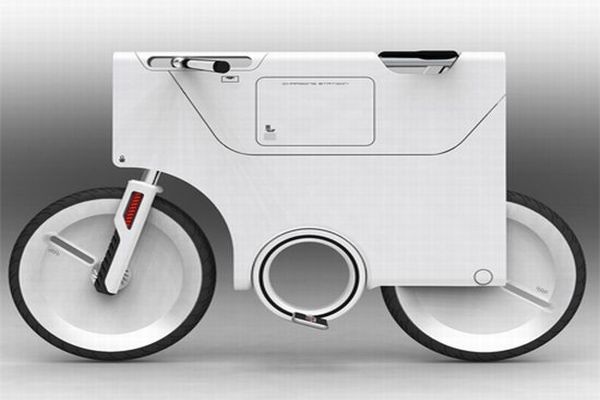
What’s new
Yuji Fujimora’s EBIQ concept e-bike is different from the other concept bikes. It uses a box-like design for the frame in place of the usual diamond design. The bike uses solid wheels.The unusual feature of this design is that the pedals, the handles, the seat and other projecting parts of the bike can all be folded into the box frame which reduces the parking space needed. The rear wheel of the bike is driven by a motor that is powered by a rechargeable Lithium Ion battery. The battery recharges from pedal power and from regenerative braking. There is an electronic display panel over the handles that can connect to a laptop or smart phone, and displays map or weather information for the rider. The bike also has power outlets to recharge mobile phones, MP3 players and other electronic devices.
What difference will it make
The bike design is attractive and the closed box design should make cleaning and maintenance easier than an open frame. The foldable pedals and handles are a good innovation that could also prevent damage to these in parked locations. The display that connects to a computer or mobile phone would add to bike’s functionality.
Problems
There seems to be no significant problems with this design concept.
4. Concept Electric Bicycle by Chris Swoszowski
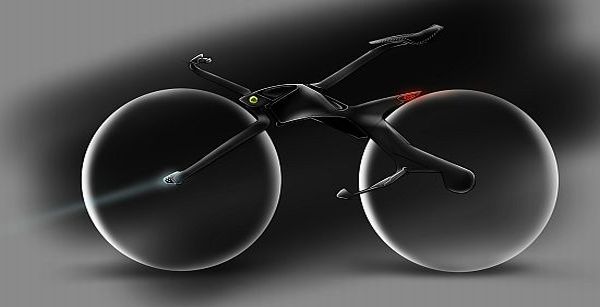
What’s new
This stylish concept bike by designer Chris Swoszowski is designed specifically for New York city commuting in 2012. The details are sketchy, but the bike does not have pedals and is driven entirely by an electric motor powered by Lithium Ion batteries. Air intake ports and an exhaust are provided to cool the motor. The frame is made of carbon fiber. The bike also has LED lamps and tail lights.
What difference will it make
Attractive form design will add to the acceptance of e-bikes for commuting. This bike’s shape takes its inspiration from Lotus Evora.
Problems
It is unclear how the Lithium Ion battery for the bike will get recharged in the absence of pedals.
5. Peugeot’s electric assist Racing bike Concept
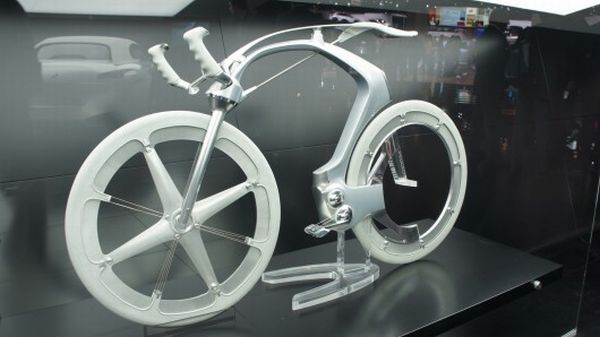
What’s new
Peugeot’s concept e-bike model was featured at a display stall at the 2009 Automobile exhibition and attracted attention since it signaled Peugeot’s interest in the e-bike market. Peugeot has already become the first mainstream automobile manufacturer to make an electric scooter in 1996 and has introduced the E-Vivacity – the 4kW light scooter in 2010 which is powered by Lithium Ion Cobalt batteries.
The model on display had few details except that the bike has two cranks, one for the pedal and the other for the motor suggesting that it is electric assist rather than a motor-bike.
What difference will it make
The entry of a mainstream automobile manufacturer into the e-bikes arena will provide the industry a brand boost that will encourage acceptance of e-bikes as an alternative personal transportation vehicle.
Problems
Having sold only 3500 units in 10 years, Peugeot has not marketed its electric scooters very aggressively. The greater awareness of ecological issues now compared to 10 years ago could result in increased demand pull, but it would still need the marketing push.



